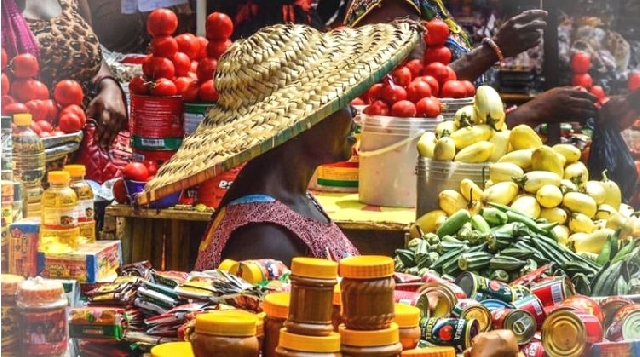Ghana's food insecurity crisis worsens amid economic struggles
 Food insecurity
Food insecurity
Ghana is facing an escalating food insecurity crisis, with the rate of insufficient food consumption (IFC) rising by 5.77 per cent in July 2024.
This is according to the latest Food Security Monitor report.
This significant increase is largely attributed to the ongoing cost-of-living crisis, which has been exacerbated by persistently high inflation, a weakening currency, and soaring fuel prices.
These economic pressures have driven up the cost of essential commodities, particularly staple foods such as maize and rice.
This concerning development aligns with projections from the World Food Programme (WFP), which warned in its February 2024 report and subsequent March analysis that approximately 1.05 million Ghanaians would face food insecurity between June and August 2024.
The WFP identified multiple contributing factors, including climate change, low agricultural prices, inadequate infrastructure, and limited access to education.
Ghana’s heavy reliance on imported rice has further heightened its vulnerability to global market fluctuations.
The July report also noted that while IFC rates remained stable in most countries from June to July, Ghana, Nigeria, and Uganda saw notable increases of 5.77 per cent, 3.98 per cent, and 7.5 per cent respectively.
Conversely, Zimbabwe experienced a 5.45 per cent decrease in IFC during the same period.
On a year-over-year basis, the majority of countries have seen increases in IFC, with exceptions including Mozambique, Rwanda, South Sudan, Uganda, and Zambia, where current levels are lower than those recorded a year ago.
The report also identifies several nations as food insecurity hotspots, where over half of the population faces insufficient food consumption.
These include Burkina Faso (56.6 per cent), Mali (69.1 per cent), Niger (82.6 per cent), and Nigeria (51.5 per cent).
Source: classfmonline.com
Trending Business

EBID opens first regional representative office in Abidjan
13:45
Opoku-Agyemang reaffirms gov't’s push for industrial-led growth at AGI Awards
10:28
RNAQ opens four new food banks in Kumasi to strengthen Ghana's food security efforts
04:29
Ghana Exim Bank, PIAA lead joint inspection tour of coconut farms across 11 regions, over 1,000 farmers benefit
04:23
Volta Young Entrepreneurs Forum 2025: Mama Bobi III and Mrs Appau-Klu honoured for empowering the girl child
16:55
Electrical contractors call for direct government contracts to improve public safety
10:27
'The time is now': Volta Peaks CEO calls for bold government action to drive youth participation in agriculture
21:53
Leaders urge Volta youth to embrace agribusiness and entrepreneurship for regional growth
21:13
Minority urges government to tackle smuggling and protect local farmers
10:29
ADB hosts National Farmers’ forum to honour 2025 award winners
06:17



